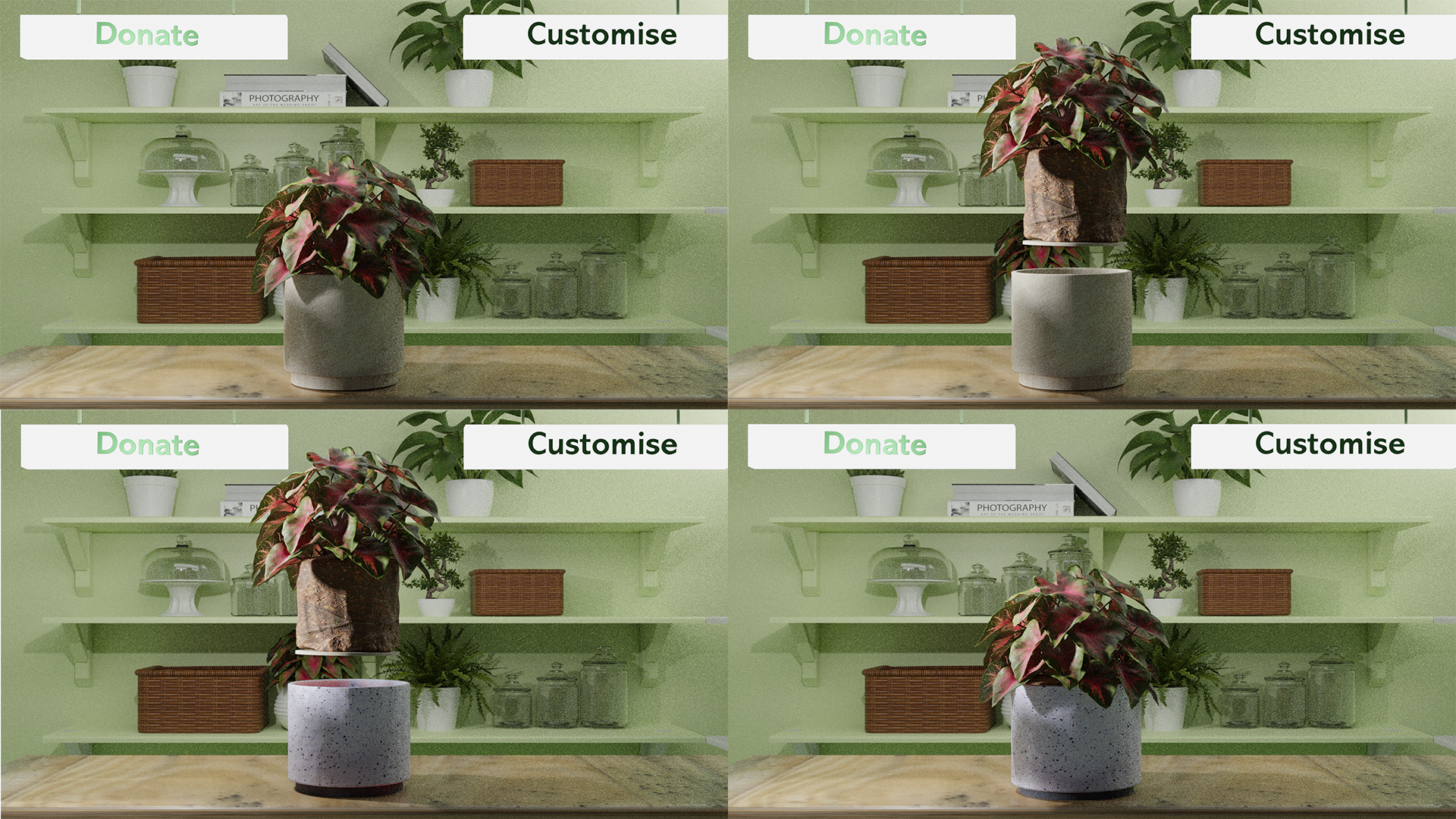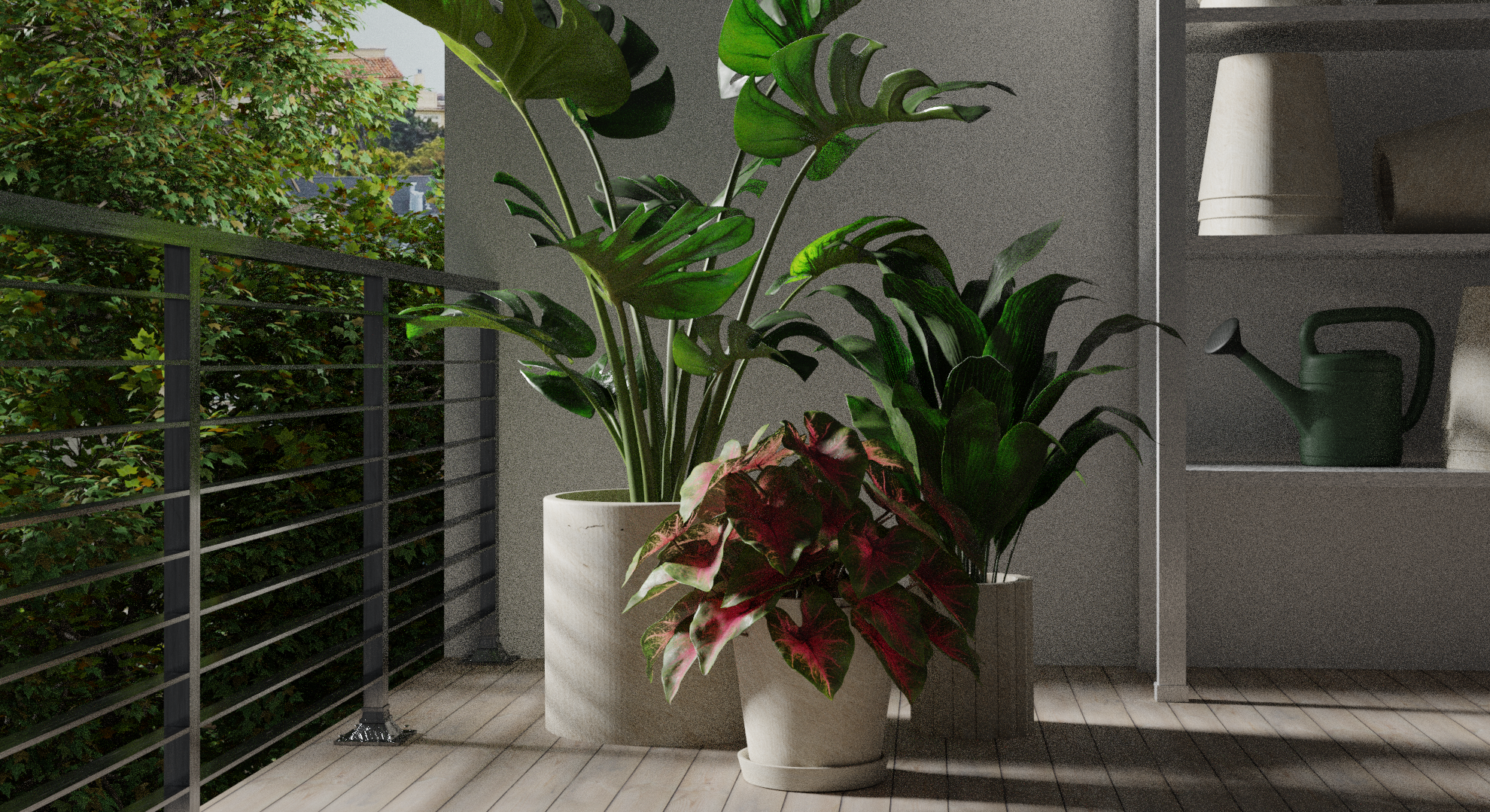evergreen.
Date: March 2021
Duration: 3 months
Role: UI/UX Designer
Brief: Design a plastic plant pot that is aesthetic, practical and adheres to Circular Economic Principles. It should be innovative – with an emphasis on form and function
Evergreen is a redesign of the conventional plant pot, used to counter the increasing problem of “single-use” nursery/garden center planters. It does this by providing users with the choice to choose whatever planter they want – as most users want to buy plants without the de facto option of also receiving a non-desirable waste product (the plastic plant pot). Users can pick between a variety of “tops” and “bases” which can be mixed and matched based on plant care needs and personal preferences. They can then return/donate the original planter back to nurseries and garden centers.
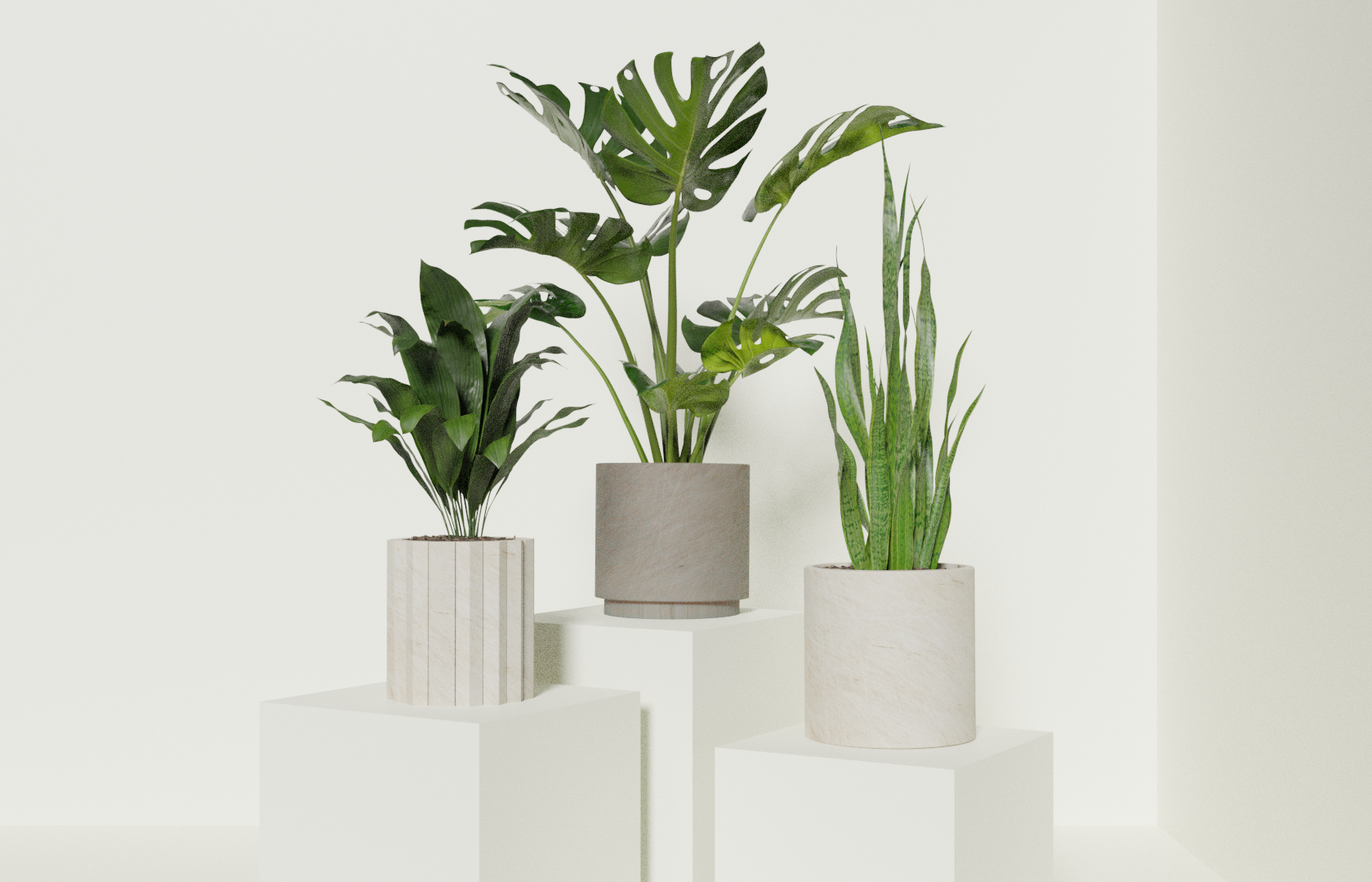
Identified Problem
On a micro scale, throwing away plastic planters may seem like a minute thing. However, on a macro scale this becomes a significant problem.
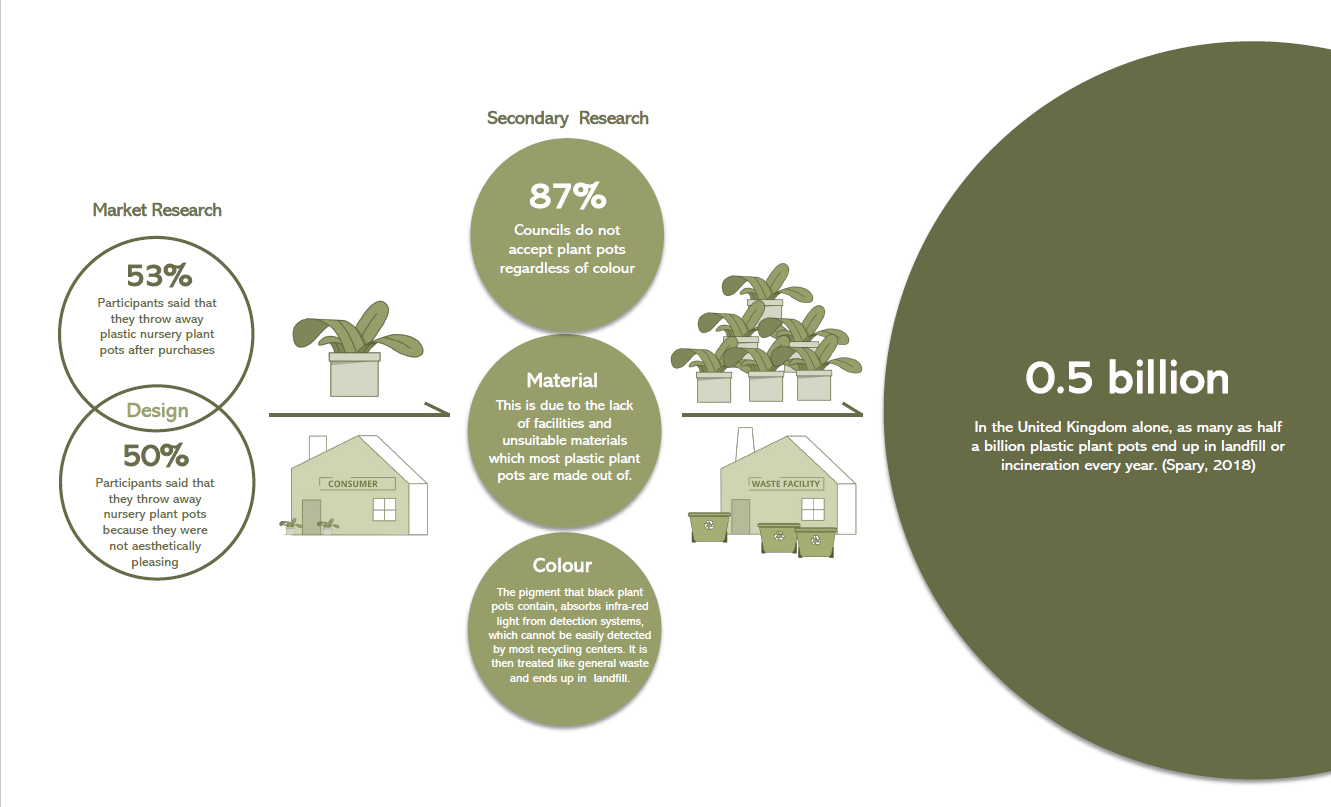
What is the current use case? How is it problematic?
The crux of the problem with plastic plant pots lies in its function as a “single-use” auxiliary device. The problem with plastic nursery plant pots, are not that they don’t fulfil the practical needs of planters, but that they are not aesthetic or pleasing to use by the consumer –thus consumers are more likely to throw them out. Due to their mass produced, (“cheap” and “weak”) appearance, many consumers consider them “tacky” and are more likely to exchange them with more stylish and decorative planters.
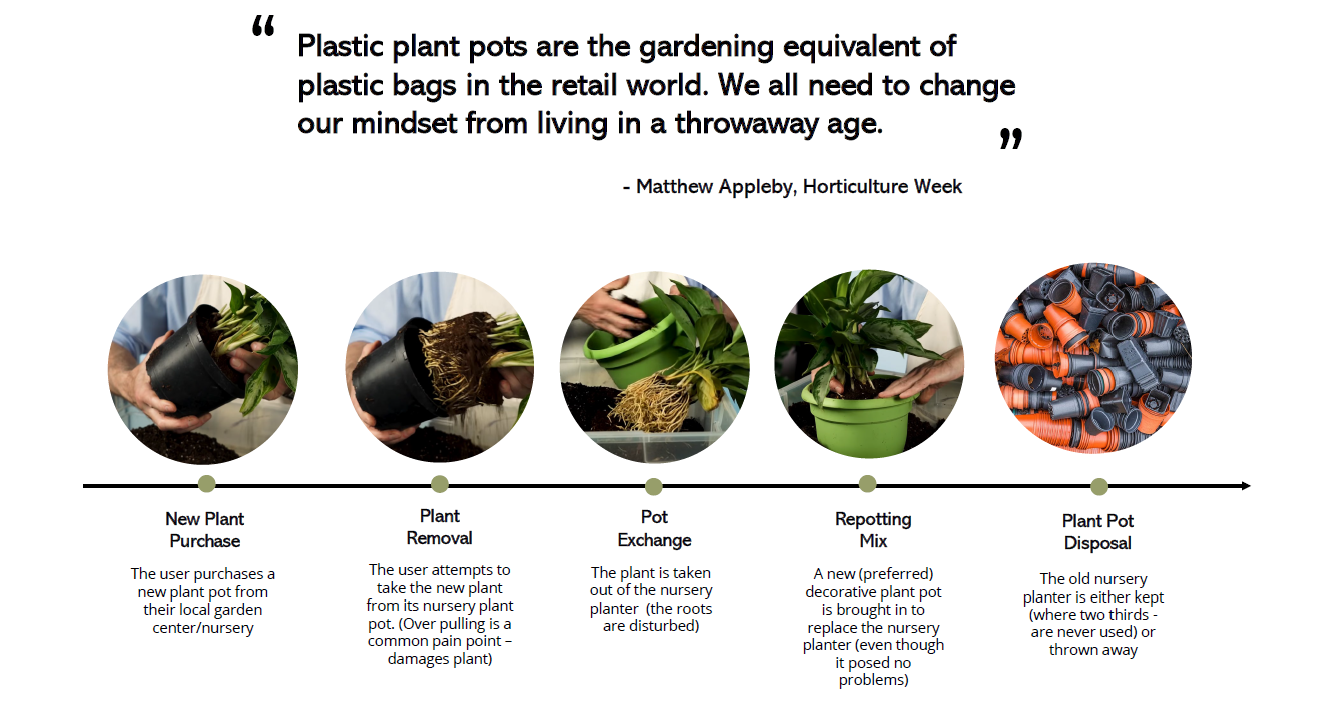
Nursery Plant Pot Life Cycle
The current life cycle of a nursery plant pot caters to a Linear Economy where it advocates for a “take-make-waste” model. This makes the use of a nursery plant pots akin to that of “single-use” plastic bags. Similar to how single-use plastic bags were phased out and reusable bags introduced –could the same methodology be applied to plant pots? To prevent this, the challenge for gardeners/users is to persuade garden centresand nurseries to take back used pots. Therefore, perhaps a planter that encouraged this action and made this good action easier to do would be beneficial?
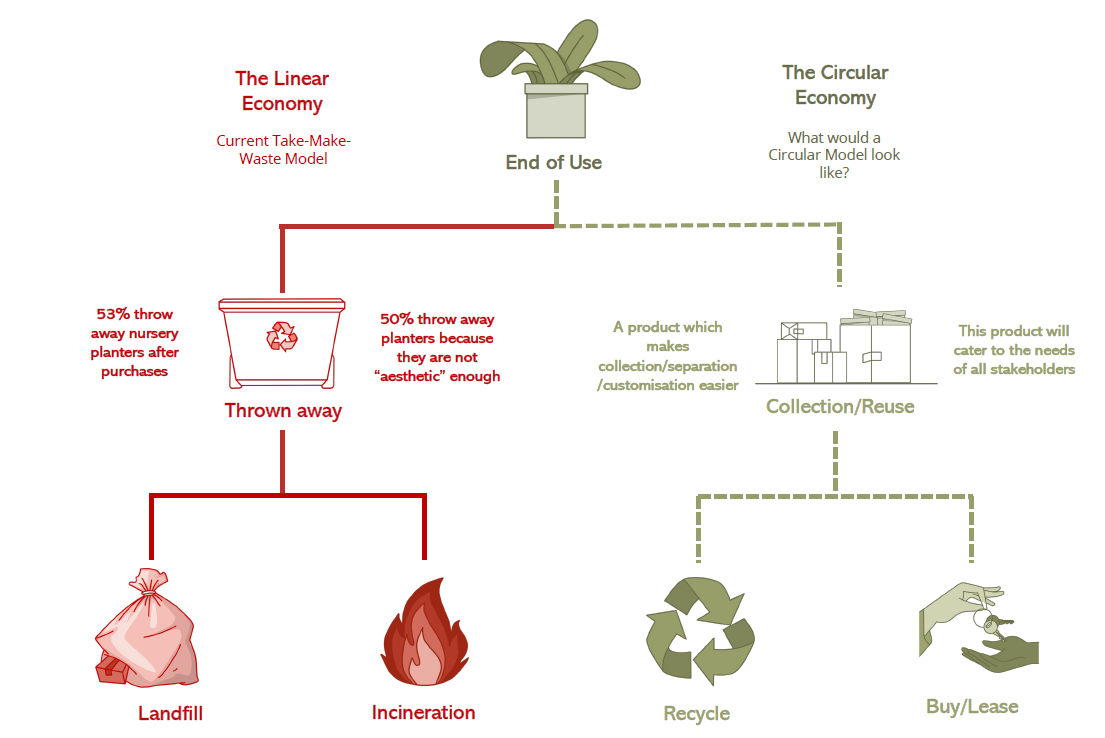
Stakeholder Identification
A stakeholder map was made to visualise the network of influencers on plant
pots and their task concerns. These stakeholders would all have a potential
influence on the new product and would have a vested interest or concern in
its success. These may pertain to practical, monetary or environmental gains.
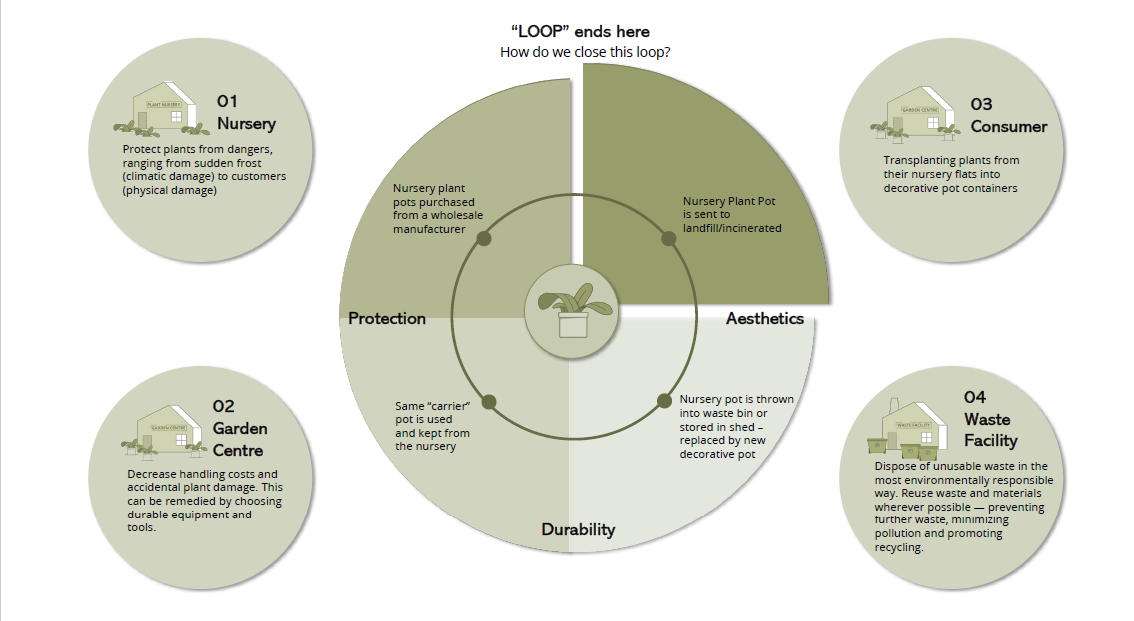
Concept Generation
Indirect benchmarking was conducted in relation to the culinary industry and the storage that consumer products like lunchboxes, baking tins and plates could provide. Special attention was given to mechanisms like the Springform tin, Tube pan and the Bundt pan where easy removal of cakes could possibly translate to the easy removal of plants in plant pots when repotting. This was important as users explained that they had killed many plants by simply pulling at their stems whilst repotting or via other mishaps.
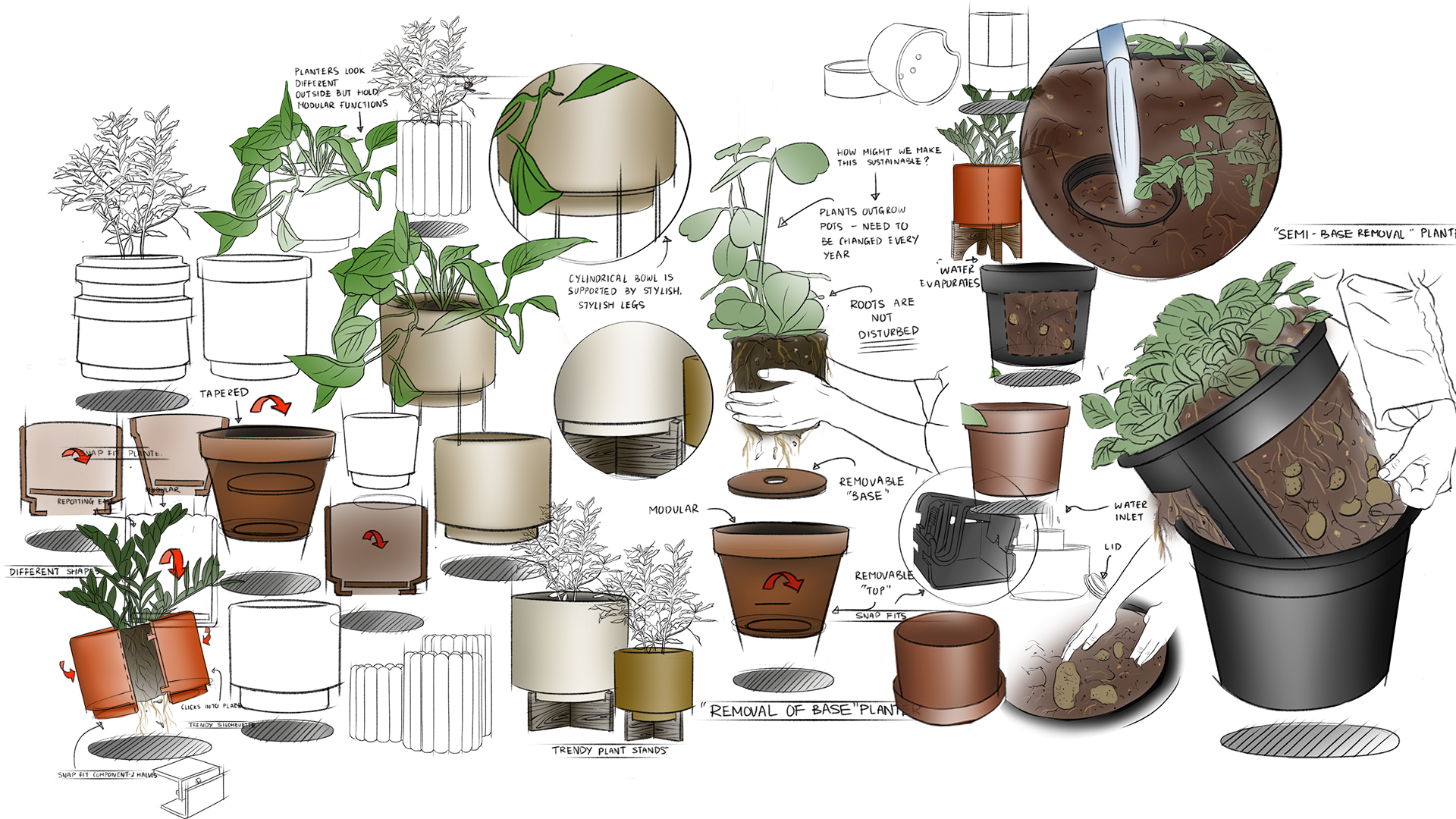
Final Design
The final design consists of a removable “top” and “base” which can be mixed and matched based on plant care needs and users’ personal preferences.
The design is considered in such a way that it does not require too much force on the user’s part. By the simple methodology of relying on gravity, the two parts stay intact and to separate, little force is needed. The plant is not disturbed -as it would traditionally be (as repotting normally requires the user to “pull” the plant out of their pot) and the process of repotting is made easier and more convenient.
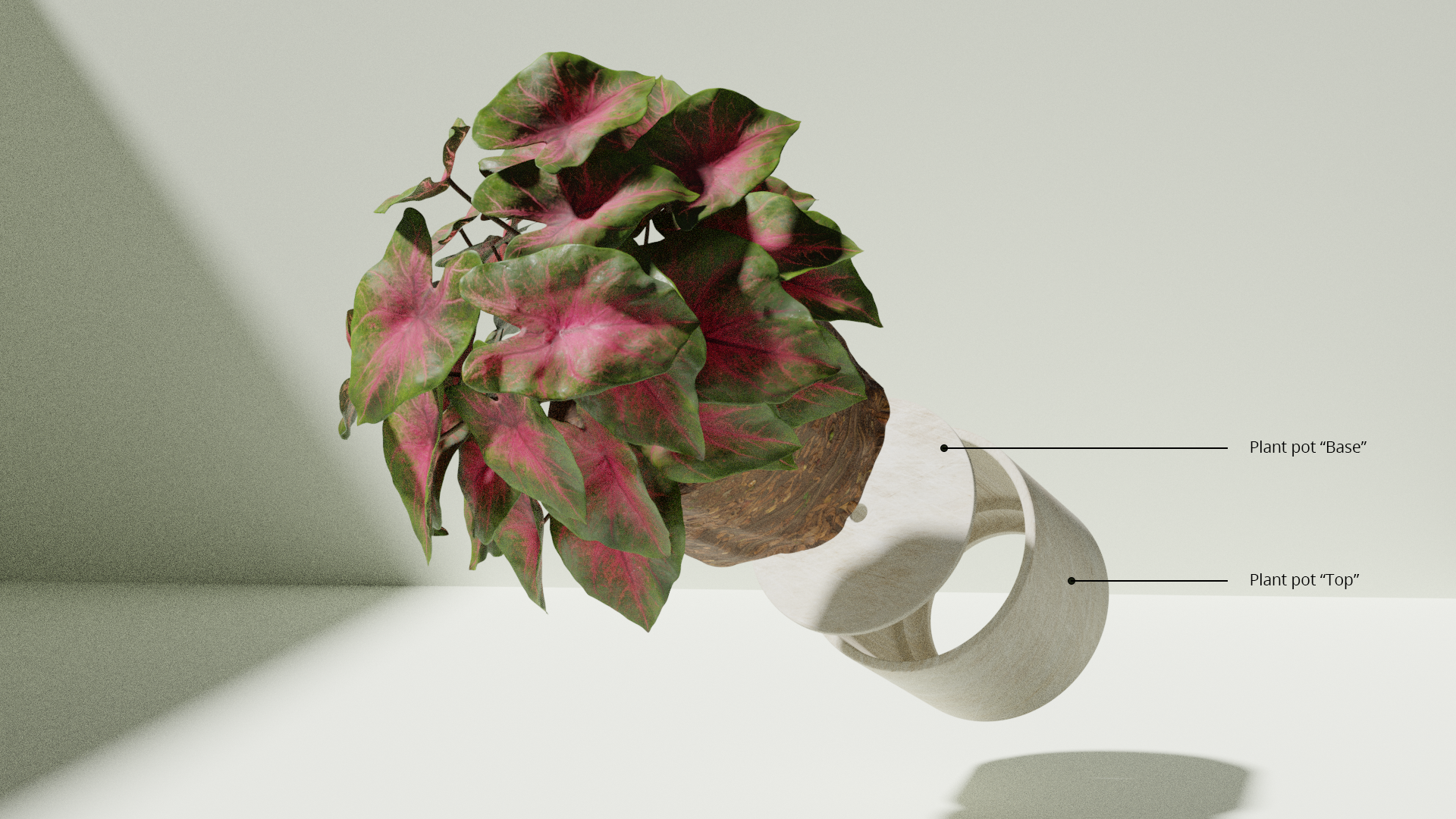
Product Experience Mapping
Users want to buy plant pots without the de facto option of also receiving a non-desirable waste product (the plastic plant pot). By providing users with the choice to choose their desired product/aesthetics, they are given the tools and resources to meet their goals. This simultaneously empowers users and produces more satisfied product experiences.
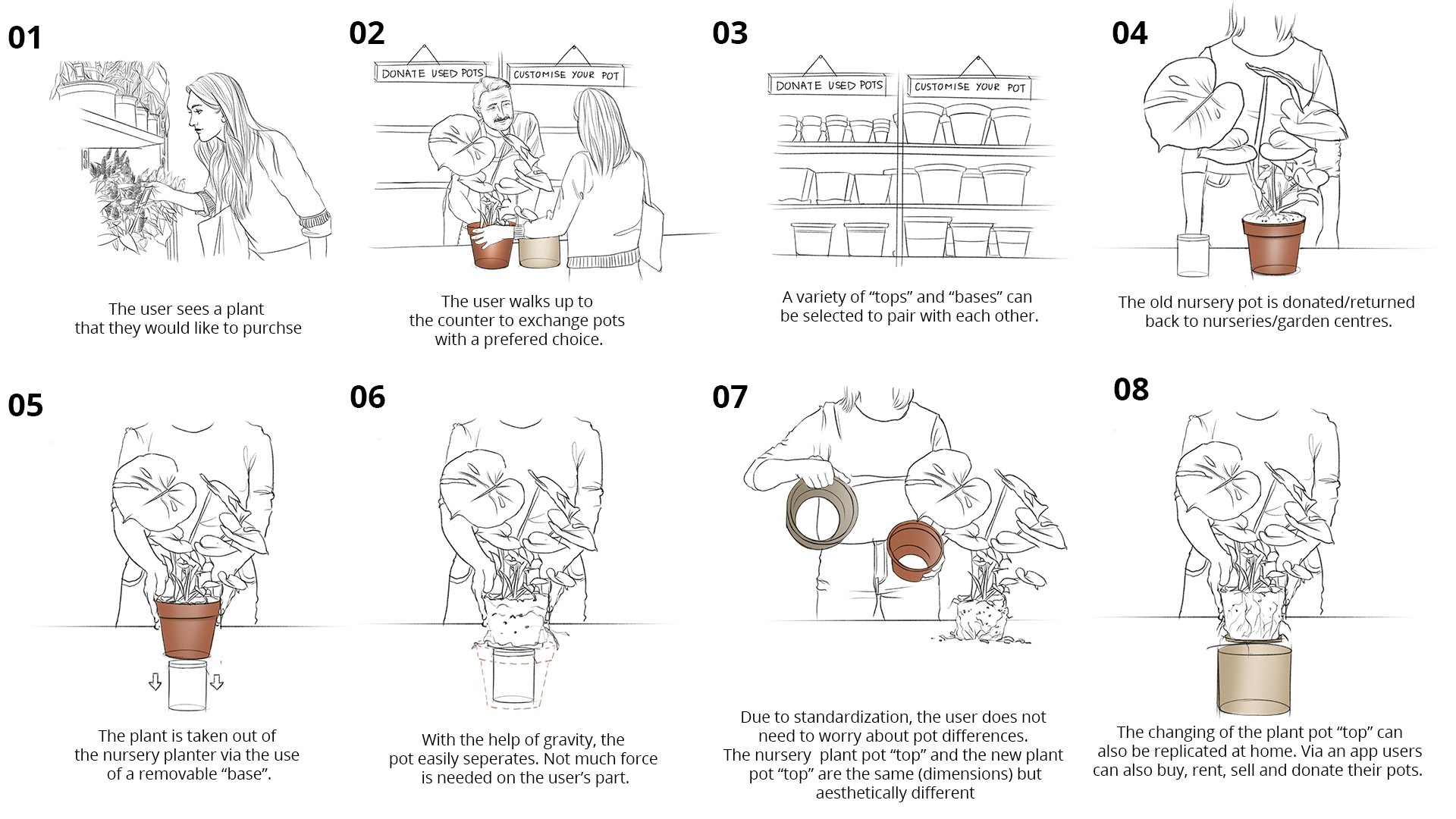
Prototyping
Rough 3-dimensional prototypes were made to check the functionality of the proposed features and designs. The prototyping of the plant pot was able to determine that the removable “base” mechanism could workand that water would not leak out. When soil was added, the components were able to bear the added weight.
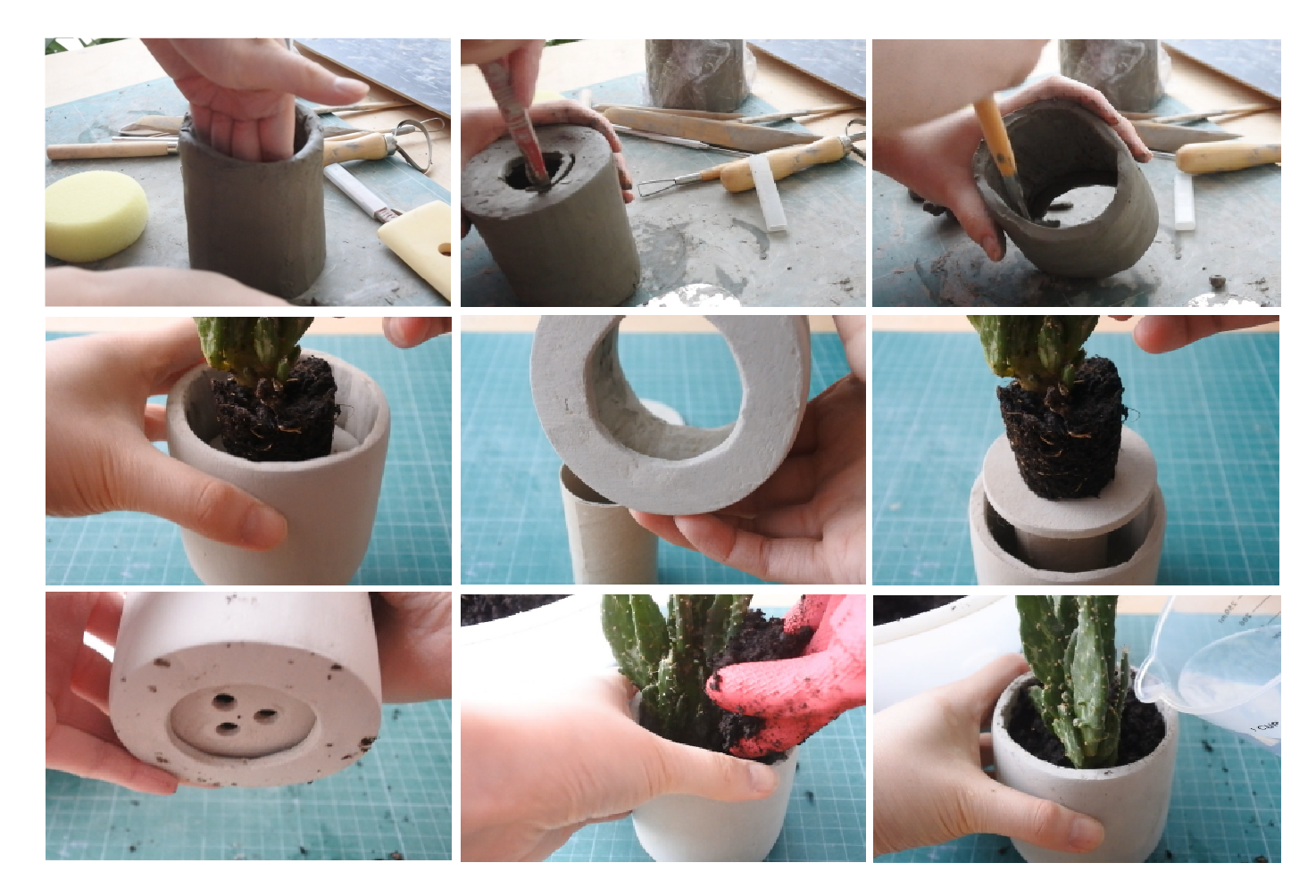
Modular
Modularization was introduced due to user feedback. One compelling user need identified during empathy research was the need for a planter to be a beautiful, elegant, ornamental piece that suited its environmental surroundings. This, however, is subjective to everyone. Modularization could help in letting the user co-create their experience.
As such, while the “tops” and “bases” are all of the same size, differentiating features such as excess drainage holes and different “top” aesthetics (such as colours, shapes, forms) can be availed of.Theenduring feature between these differences will be the ability to remove the base and settle the “base” firmly onto the different “tops”.
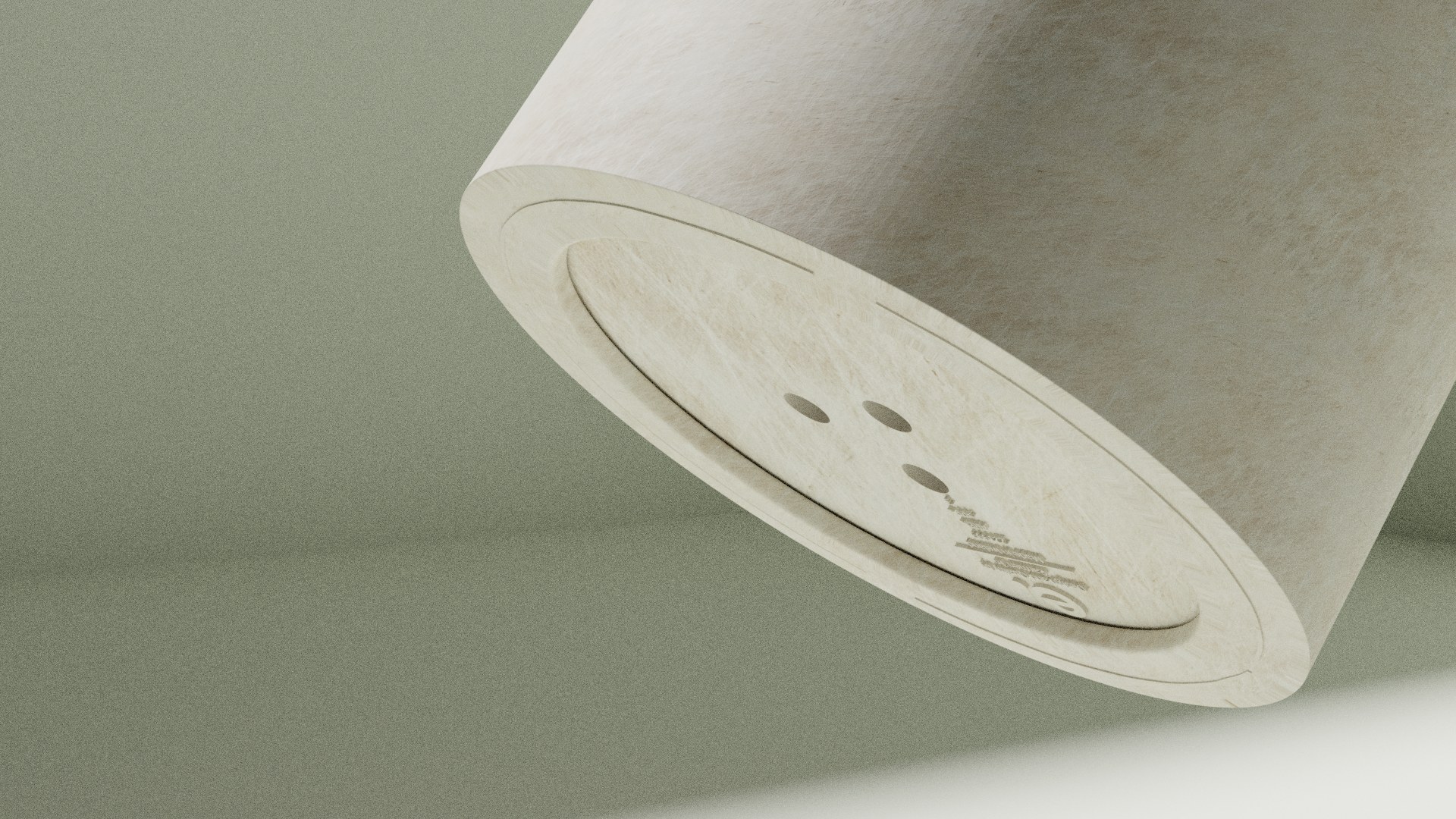
Drainage
To match the needs and growing capacities of various plant species, a variety of “bases” with different drainage holes and holes for wheel inserts can be availed.
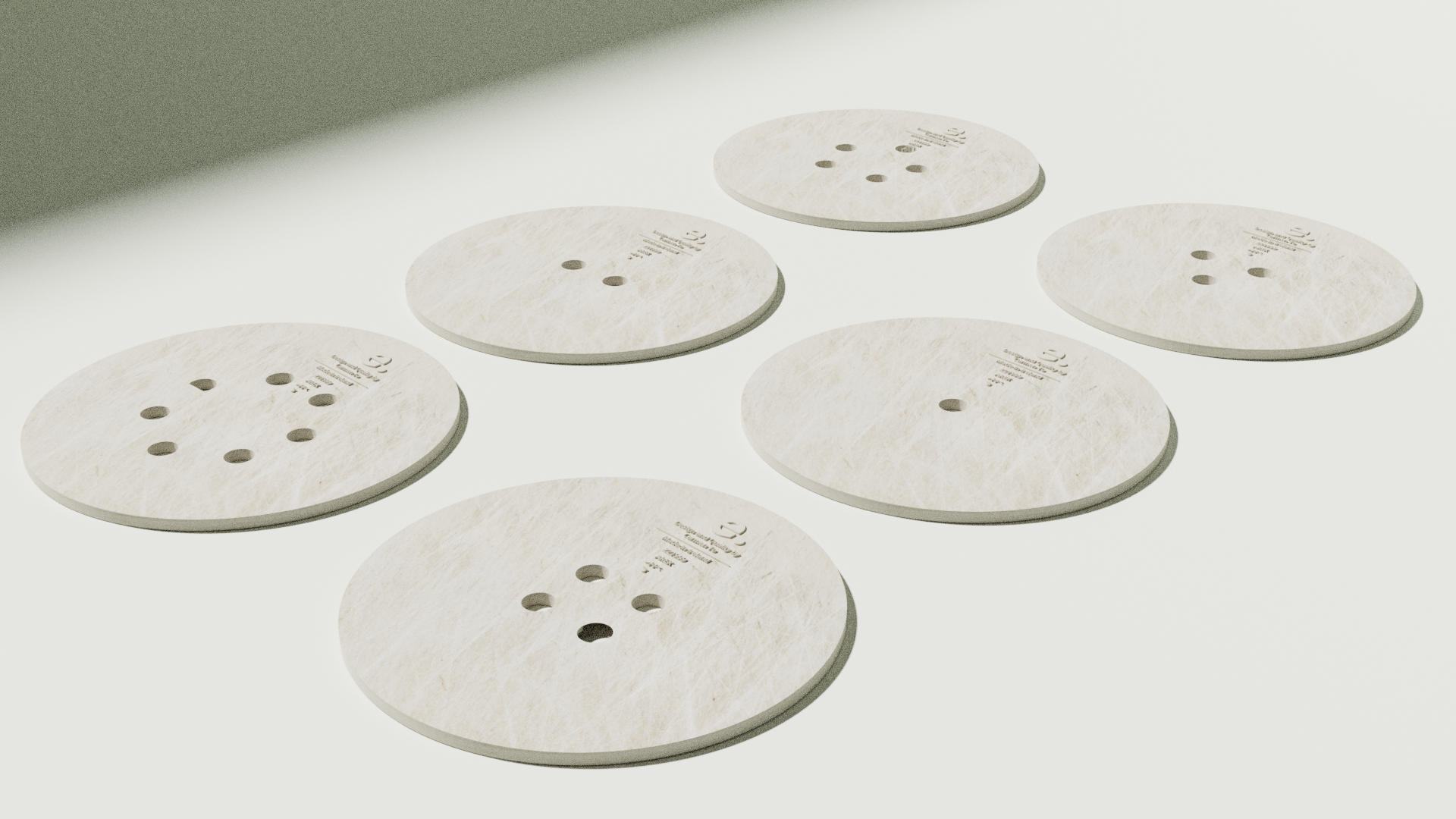
Product Service Design
To effectively reap the benefits of evergeen., the product system service is also considered in the design process. As well as making it easier for the user to repot the plant, it also makes it easier for them to exchange plant pots in the garden centre/nursery where they can customisetheir plant pot and pair their “base” with a “top” of their own choosing.
In the garden centre a special area/kiosk is reserved for the customisationof the evergreen plant pot. This is where users can exchange their nursery plant pots “tops” with one of their own choosing. The nursery plant pot is then collected via a donate/return feature
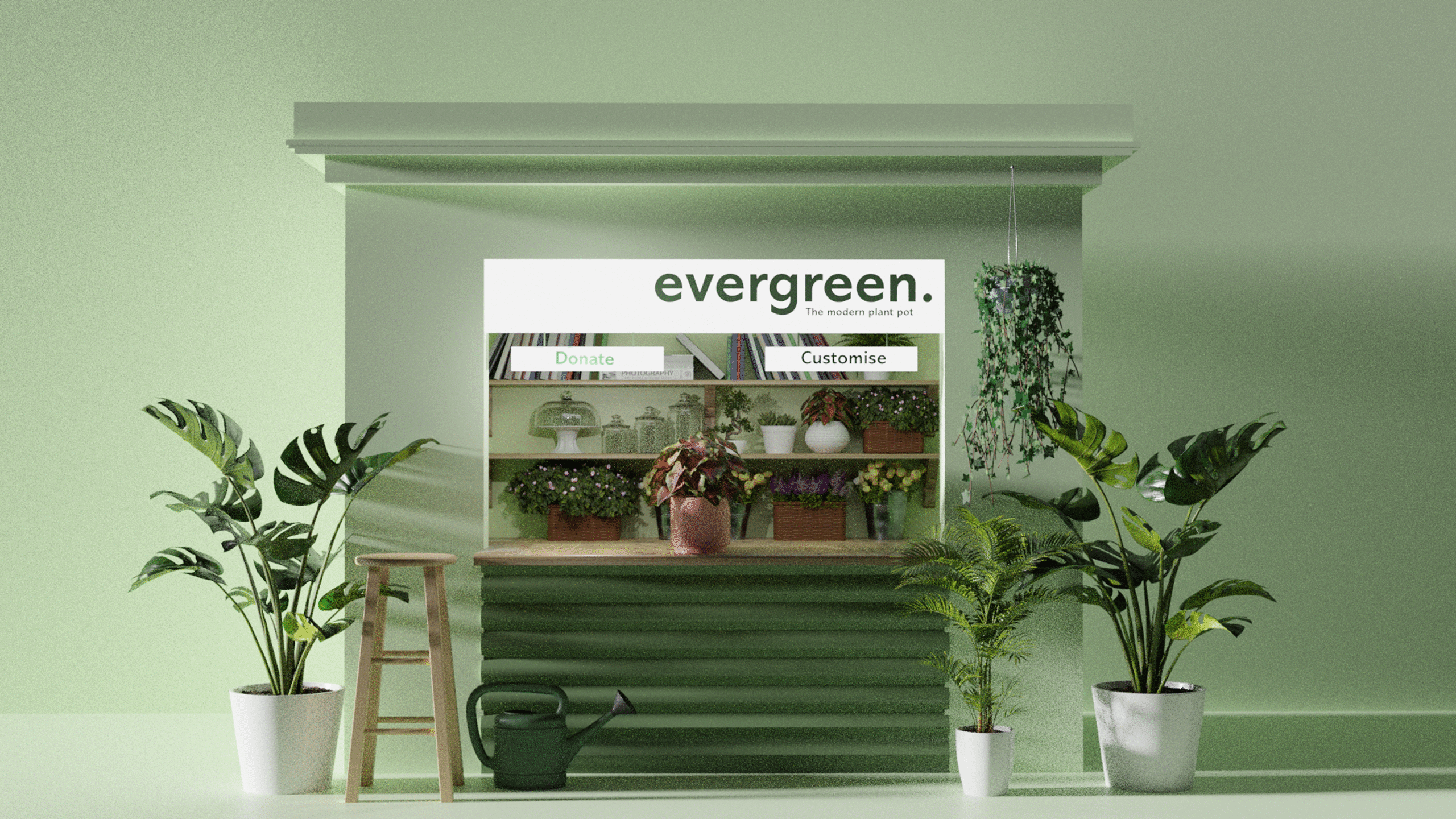
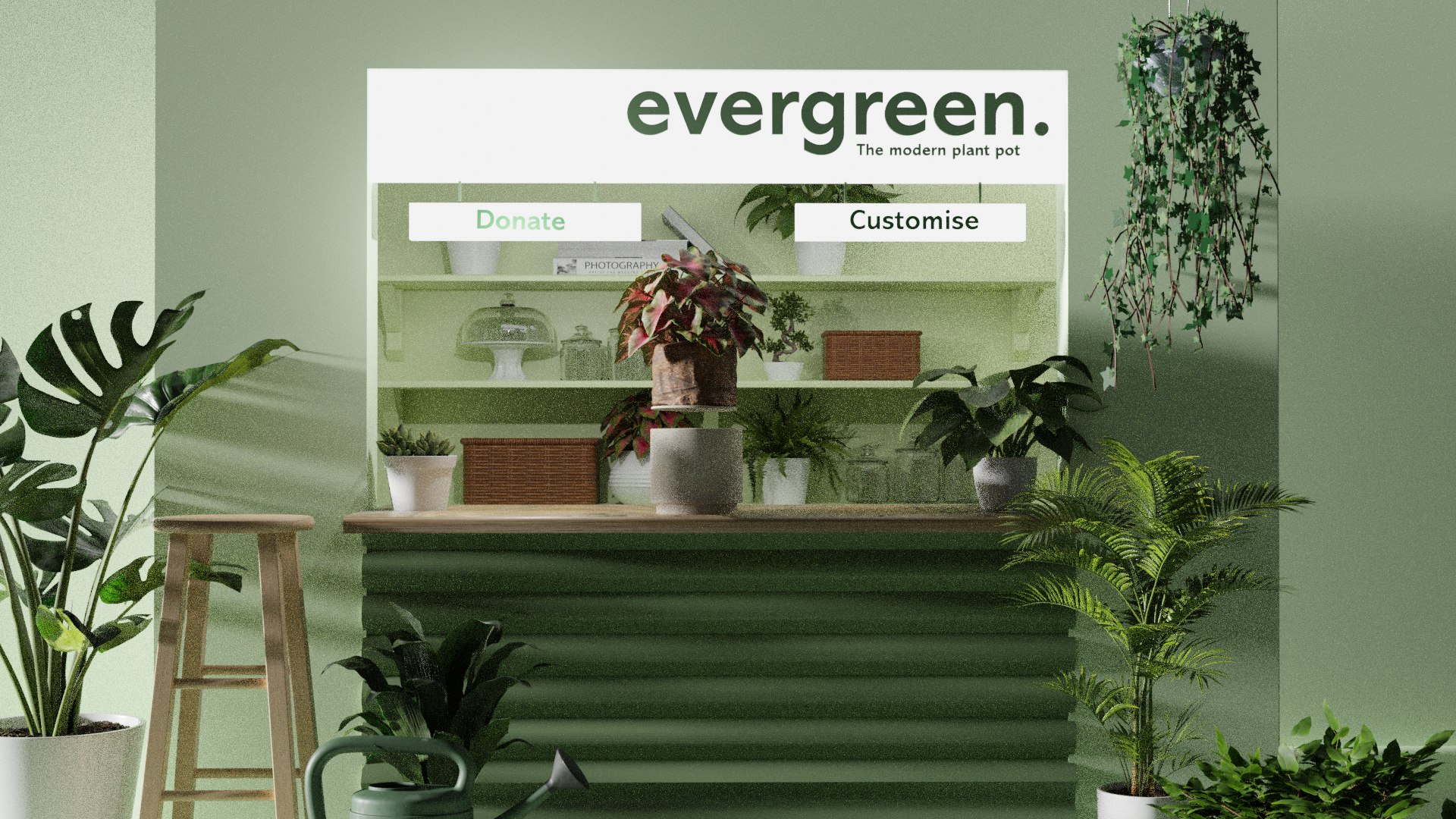
Product Experience Mapping
Standardisationin “base” and “top” sizes allows the user to rent, buy and sell plant pots physically and online (in keeping with Circular/Shared Economy Principles e.g. renting clothes, renting equipment). This keeps evergreen pots in the user “loop” for as long as possible. This could also be a viable user strategy as plants need to be repotted at least once a year. Short term ownership could therefore be an economical alternative.
Standardization also allows the user to donate similarly dimensioned plant pots to nurseries and garden centres. This reduces the waste created by single-use nursery plant pots and helps them save finances.
